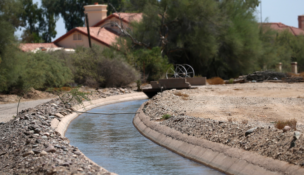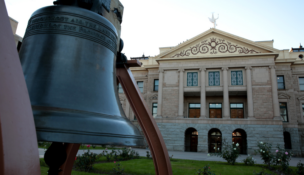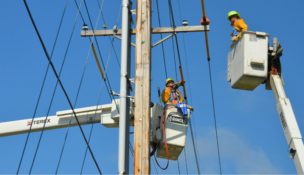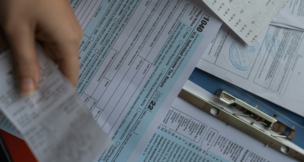Energy bill sparks opposition
Arizona Capitol Reports Staff//February 22, 2008//[read_meter]
The way Rep. Lucy Mason describes it, the Omnibus Energy Act of 2008 is a work in progress. The way some groups have been gunning for it, H2766 looks more like a moving target.
It cleared its first hurdle Feb. 21, when the House Water and Agriculture Committee approved it on a 6-2 vote. Mason chairs the committee, and is prime sponsor of the 50-page energy bill.
Opposition to all or parts of it has come from the Home Builders Association of Central Arizona, the Arizona Chamber of Commerce and Industry and Salt River Project.
Mason, a District 1 Republican from Prescott, has had ongoing meetings with more than 50 stakeholders. She says the bill was crafted with their input.
In a nutshell, the bill seeks to conserve energy by requiring efficiency standards for homebuilders, a greater reliance on renewables and other energy-saving programs.
It seeks a 30 percent reduction in electricity use in Arizona, Mason said.
Toward that end, the legislation would establish efficiency goals for new buildings. Fifteen percent of new buildings must be efficient by 2012 — and 50 percent by 2020.
When homebuilders apply to cities or counties for building permits, they would be required to report if new homes meet energy-efficiency standards.
Homebuilders have called the requirements an unnecessary mandate.
“They don’t want a mandate about anything,” Mason said.
Mason says the bill would give homebuilders choices from a number of green-building standards — including one that homebuilders have already adopted.
But association lobbyist Spencer Kamps said 24 percent of new homes being built in Arizona conform to the federal Energy Star standards. It’s a voluntary effort, he said.
Speaking of the proposed mandate, he added: “I guess in Arizona, when you do the right thing, you need to be punished.”
Kamps said the bill also unfairly targets new homebuilders. It doesn’t require efficiency upgrades for homes built 20 and 30 years ago. And those houses are much less energy efficient than houses built now, he said.
“There’s nothing in the bill for these people. It’s solely on new construction,” he said.
But Sierra Club Grand Canyon Chapter lobbyist Sandy Bahr said homebuilders “can and should do more.”
It wouldn’t be a burden to meet mandatory standards, if they’re already being met voluntarily, said Bahr, who supports the bill.
In addition, she said, it would be impractical to retrofit existing homes.
“A lot more of our emissions will come from homes that haven’t been built,” Bahr said. Speaking of new-home builders, she added: “It’s an opportunity to do it right the first time.”
The Arizona Chamber of Commerce and Industry has not gotten on board with H2766 either, though officials didn’t cite specifics.
“The bill has quite a bit of stuff in it, and all those different components affect industries in different ways,” chamber spokeswoman Ann Seiden said.
Mason said, however, chamber officials were often no-shows at meetings on the legislation.
“They haven’t been there,” Mason said. “I’ve been working on this for four years, so let’s get to the table here.”
Seiden said the chamber’s individual members sat in on the meetings.
“So right now, each of those groups is participating in ongoing dialogue with Representative Mason,” she said.
Along with energy efficiency, the bill also would seek to push publicly owned utilities — including Salt River Project — to generate more electricity from renewable sources. It would largely mirror Arizona Corporation Commission requirements for privately owned utilities, including Arizona Public Service.
SRP is not regulated by the Corporation Commission.
The Mason bill would require public power companies to generate 15 percent of their electricity from renewable sources by 2025. These include solar and wind power.
SRP lobbyist Russell Smolden has said the bill fails to recognize the utility’s use of hydroelectric power, drawn from water reclamation projects along the Salt and Verde rivers. SRP is counting hydroelectric power in a voluntary renewable program.
Mason said hydroelectric power makes up 4 percent of the electricity generated by SRP.
She added: “We need to rely on more than old technologies. We need to push ourselves forward.”
APS, a regulated utility, sees the renewable standards in H2766 as a positive move. As introduced, the bill would apply one statewide standard to privately and publicly owned utilities, APS lobbyist Martin Shultz said. In short, it would level the playing field.
“Otherwise, you’ve got separate systems,” Shultz said. “If that’s what state leaders want, that’s up to them.”
SRP’s argument, however, apparently won the day. The House Water and Agriculture Committee attached several amendments to the bill. One of them would allow SRP to count hydroelectric power as a renewable source.
The next stop is the House Environment Committee, where the bill might not get such a friendly reception, if it’s heard at all.
Chairman Ray Barnes could choose to table the bill.
Mason said she had talked to Barnes. He told her he wanted to know more about the bill and was meeting with stakeholders.
Among other things, the bill would also require:
• Counties and cities to adopt specific standards for residential solar photovoltaic and water-heating systems. Current standards are usually tied to structural analysis and building plans.
• The state Board of Education to adopt construction rules for energy savings and renewable energy measures. Energy performance contracts could not exceed $500,000.
• School districts to reduce energy use by 10 percent by July 1, 2011, and 20 percent by 2020.
• All new state buildings to attain energy-efficiency standards by the Leadership in Energy and Environmental Design Green Building Rating System (LEED).
• School bus drivers to turn off engines when the bus is parked for students.
• Cities greater than 100,000 to adopt ordinances to limit idling of large diesel trucks.
• Stricter energy efficiency standards for appliances, including wine coolers, plumbing fixtures, air conditioners, clothes washers and dryers, pool heaters and audio and video equipment — among others. ?
















